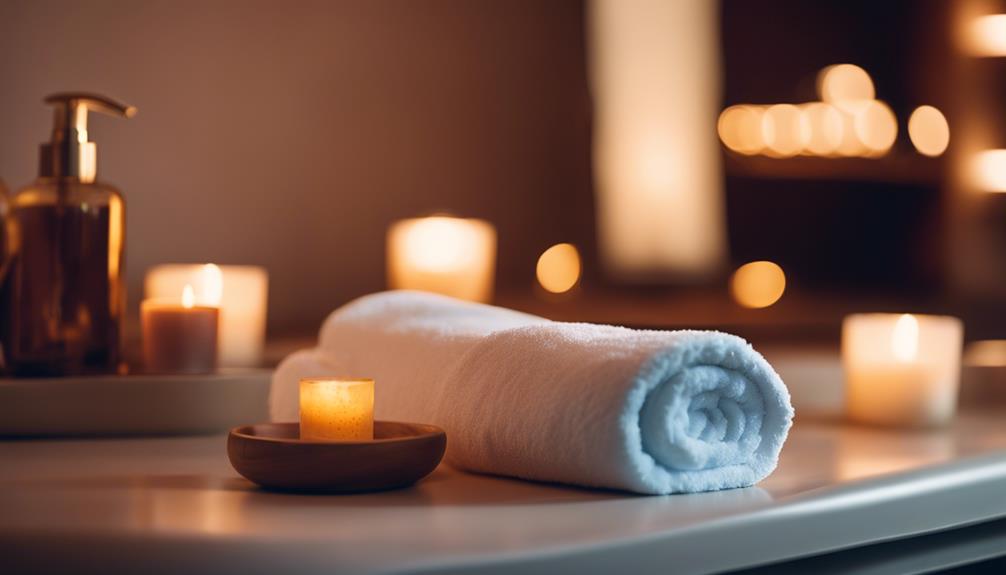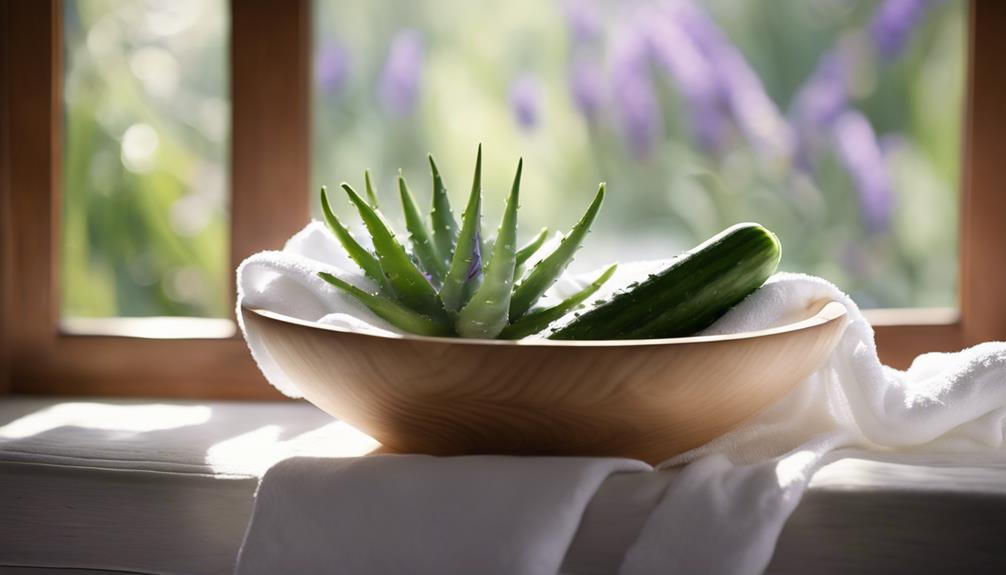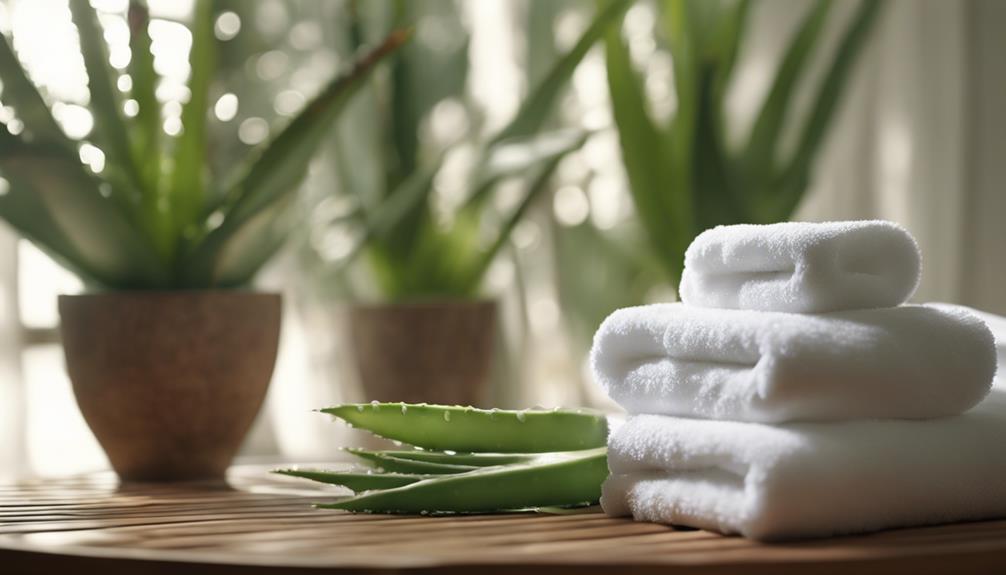So, you wanna get that perfect tan without turning into a lobster? First, choose the right tanning bed—UVA for deep color or UVB for a bronzed glow. Don't forget a good bronzer with SPF; it's like sunscreen's cooler sibling. Before you hop in, cleanse your skin and protect delicate spots with sunscreen. And please, rock those protective goggles! After tanning, keep your skin moisturized to make that color last, and avoid super hot showers. It's all about keeping it safe and looking fabulous. Stick around, and you'll snag even more handy tips to glow without the burn!
Key Takeaways
- Always wear protective eyewear to shield your eyes from harmful UV rays during tanning sessions.
- Choose a tanning bed that suits your skin type, especially if you have sensitive skin.
- Apply a tanning lotion appropriate for your skin, ensuring it includes moisturizing and protective elements like SPF.
- Hydrate your skin with moisturizers post-tan to maintain the bronzed effect and prevent dryness.
Understanding Tanning Bed Types
When diving into the world of tanning beds, it's crucial to grasp the different types available and how their varying UV light ratios can impact your tanning results.
You've got your UVA beds, which are great for deepening your color, and your UVB beds, which help you get that bronzed glow.
If you're someone with sensitive skin, you'll want to stick with beds that have lower UVB levels to avoid irritation.
Plus, did you know that bulb types can speed up or slow down your tanning process? It's like a race against time!
And don't forget about bed size—make sure you fit comfortably to avoid those awkward missed spots.
Happy tanning, and stay safe!
Choosing the Right Bronzer

Understanding the right bronzer is key to enhancing your tan and achieving that perfect sun-kissed look. You want something that hydrates your skin and matches your natural tone, right? No one wants to look like an overcooked lobster!
Plus, choosing a bronzer with SPF gives you that extra layer of protection against those pesky UV rays. Look for products that offer skincare benefits like anti-aging – who doesn't want to look youthful while tanning?
When applying, make sure it enhances your natural glow instead of looking like you rolled in dirt. And don't forget to grab a tan extender for after your session; it'll help keep that bronzed effect going longer!
Happy tanning!
Pre-Tan Skin Care

How can you guarantee your skin is ready for tanning?
First, make sure to clean your skin thoroughly to avoid any makeup or perfume splotches. Trust me, no one wants a polka-dotted tan!
Next, use a tanning lotion that suits your skin type; it'll protect you while giving you that sun-kissed glow. If you've got sensitive areas, don't forget to slather on some sunscreen or cover up. It's like giving those spots a little hug!
Also, remember to wear protective eyewear to keep your peepers safe.
And hey, if you want to keep that bronzed look longer, grab a tan extender lotion afterward—your skin will thank you!
Tanning can be fun, just prep right!
Protective Measures During Tanning

During your tanning session, always wear protective eyewear to shield your eyes from harmful UV rays. Trust me, you don't want to walk around with squinty eyes like you just saw a ghost!
Also, think about using bronzers that match your skin tone and have SPF—after all, you want to glow, not fry!
If you're hitting a tanning bed, pick one that suits your skin type, especially if you're on the sensitive side.
And don't forget to cover those delicate areas like your face and lips with sunscreen or a cute cover-up. You wouldn't go swimming without a life jacket, right?
Post-Tan Skin Maintenance

After tanning, it's crucial to hydrate your skin to lock in that golden glow and maintain its health. You don't want all your hard work to fade away, right? So, grab a good moisturizer or lotion, and slather it on!
Look for products with aloe or vitamin E to soothe any irritation. And hey, don't forget to drink water—your skin will thank you!
Avoid hot showers for a day or two since they can strip moisture. Instead, opt for lukewarm water. Also, steer clear of harsh scrubs; your skin's delicate, and it deserves some TLC.
Frequently Asked Questions
How Often Should I Use Tanning Beds for Optimal Results?
You should use tanning beds two to three times a week for ideal results, allowing your skin to adjust. Always monitor your skin's response and take breaks to prevent overexposure and maintain health.
Can I Tan With a Sunburn or Irritated Skin?
Tanning with sunburn or irritated skin isn't wise; it risks further damage, increases pain, and prolongs healing. Focus on recovery first, then enjoy tanning later when your skin's healthy and ready for the sun.
What Are the Long-Term Effects of Tanning Beds on Skin?
Tanning beds can cause premature aging, increased risk of skin cancer, and skin texture changes. You'll notice dark spots and wrinkles over time, so it's crucial to take into account these long-term effects before tanning.
Are There Age Restrictions for Using Tanning Beds?
Did you know that about 30% of teens use tanning beds? Most states restrict their use to individuals 18 and older, while some allow minors with parental consent. Always check local regulations to stay informed.
How Do I Know if I'm Overexposing My Skin to UV Light?
You'll know you're overexposing your skin to UV light if you notice redness, itching, or discomfort. Pay attention to these signs, and limit tanning sessions to avoid long-term skin damage and health issues.
Conclusion
Tanning can be fun, but remember, your skin's got feelings too!
Did you know that nearly 90% of skin aging is caused by sun exposure? Yikes!
By picking the right bed, using bronzers with SPF, and keeping your skin hydrated, you can rock that golden glow while keeping your skin happy.
So, go ahead and enjoy your tanning sessions, but don't forget to be kind to your skin.
It'll thank you later!










